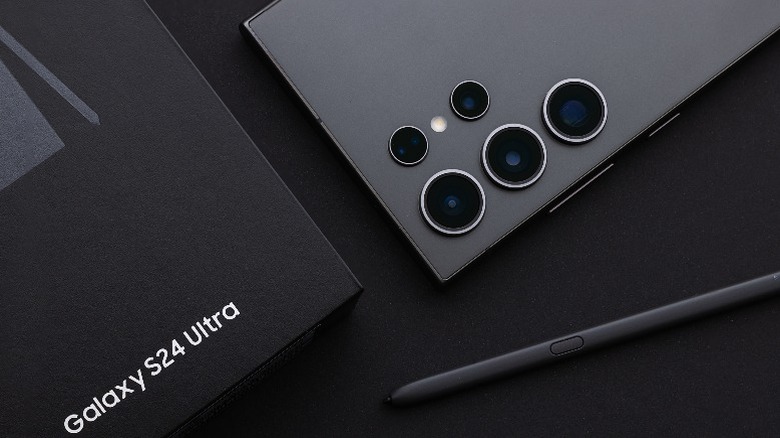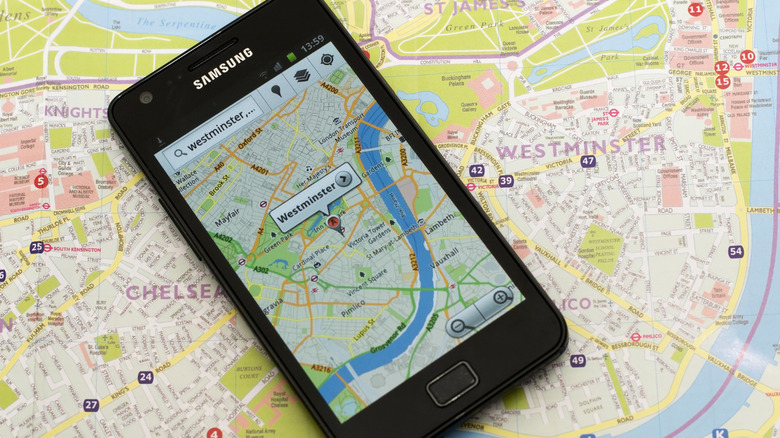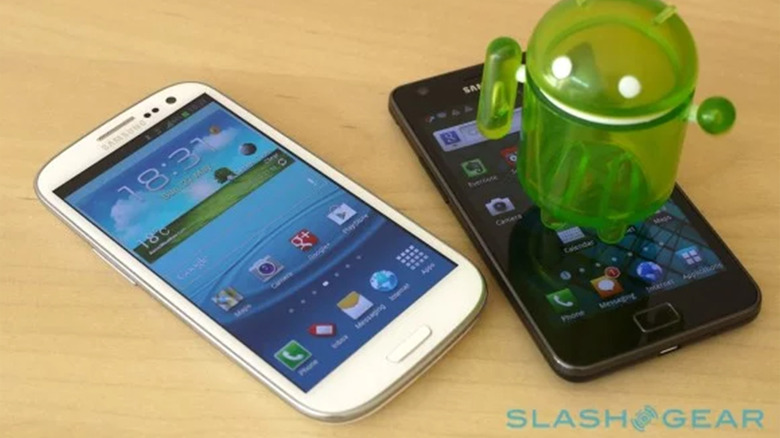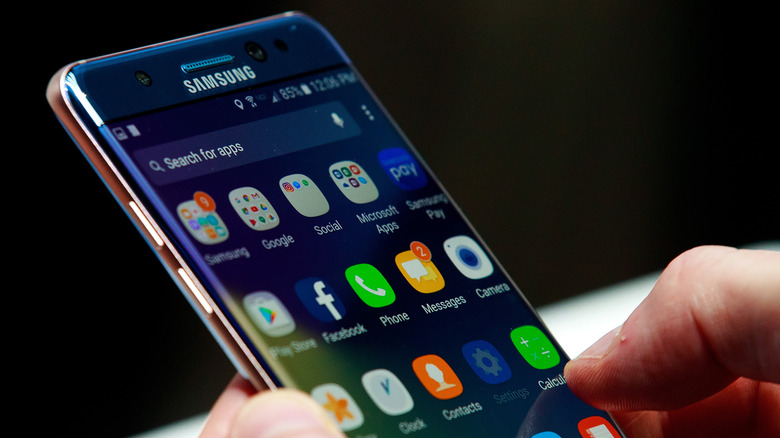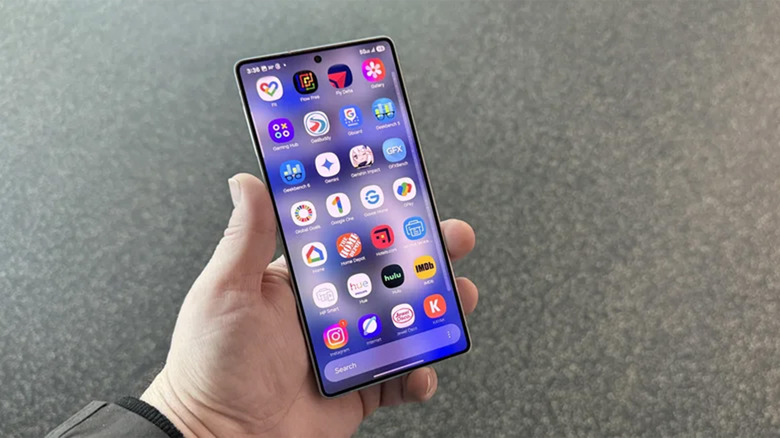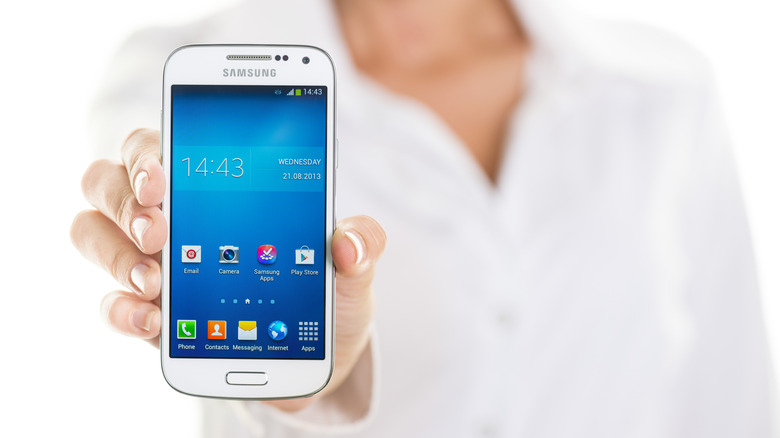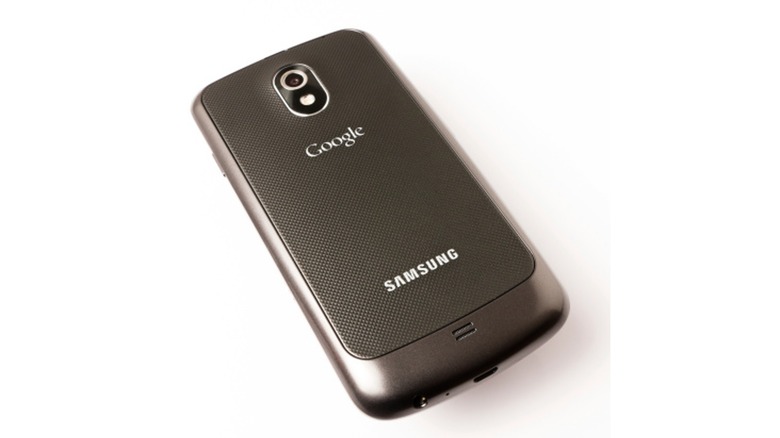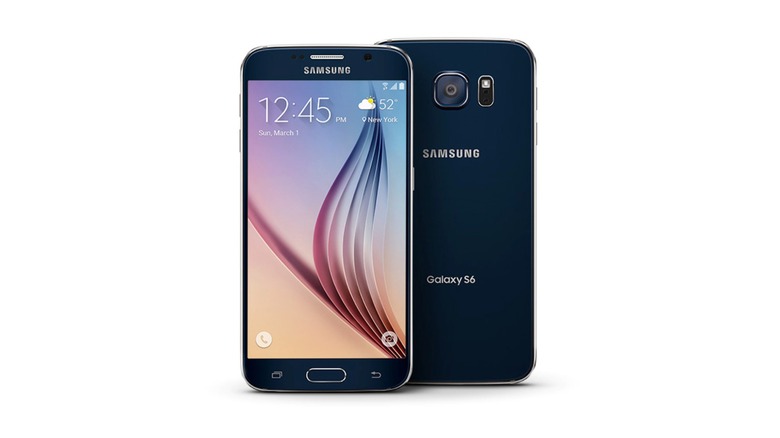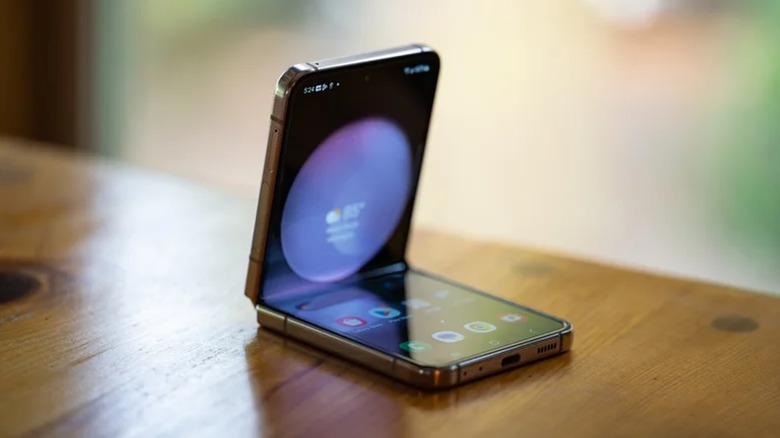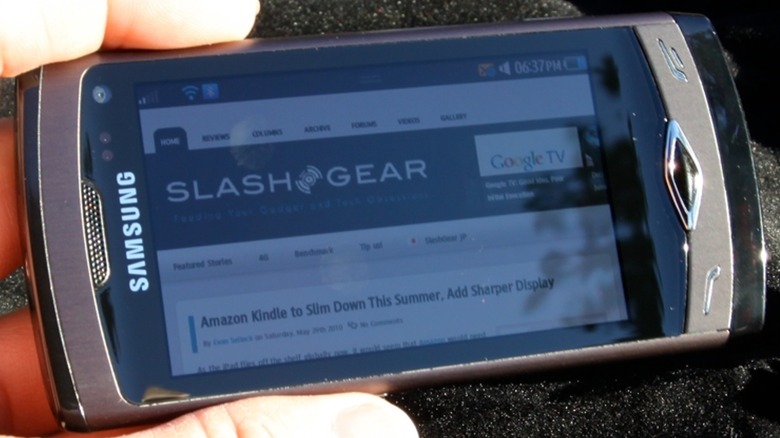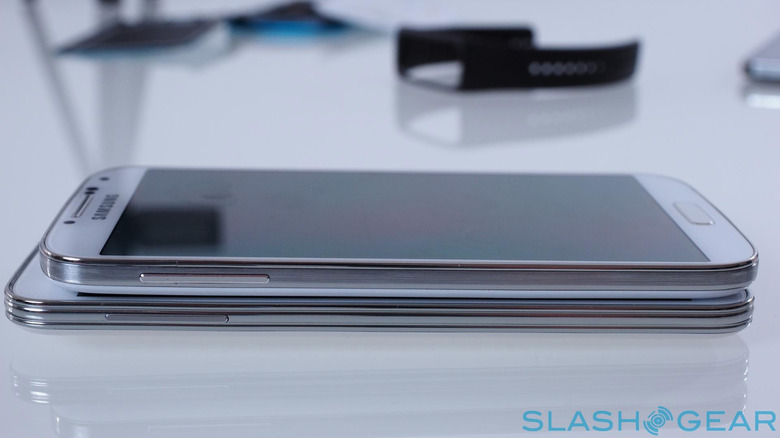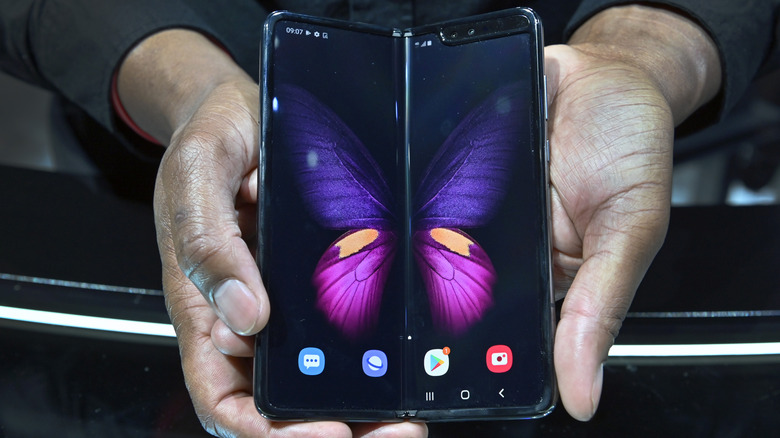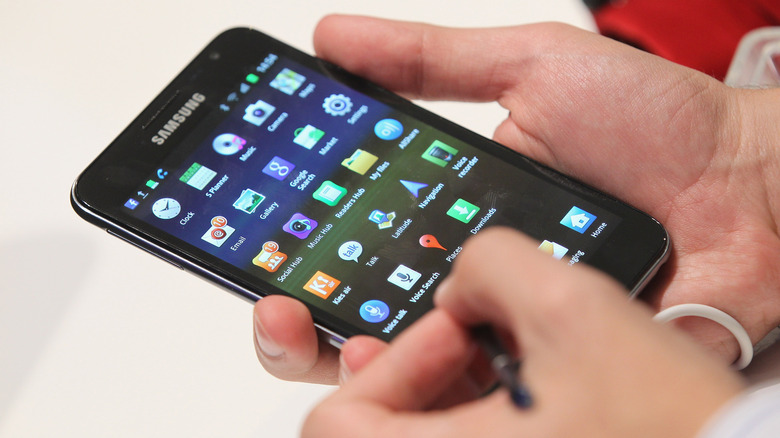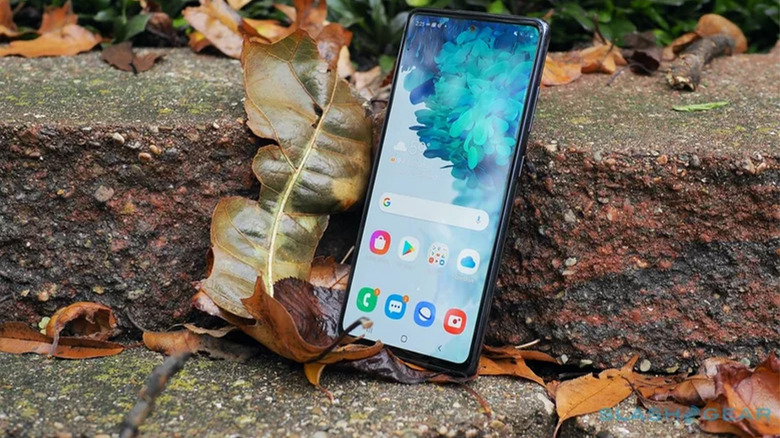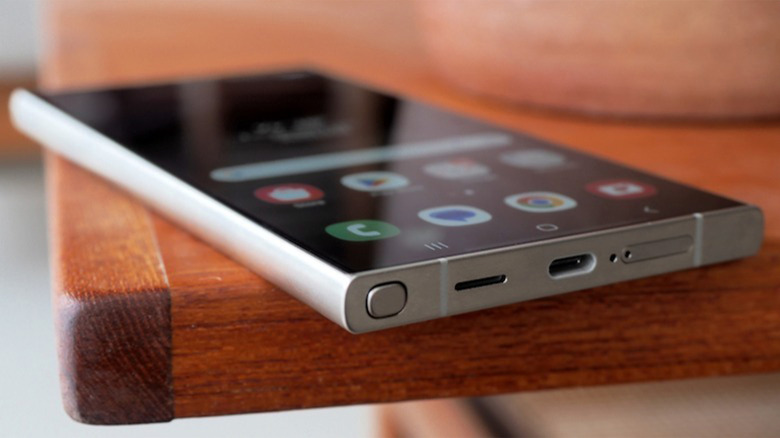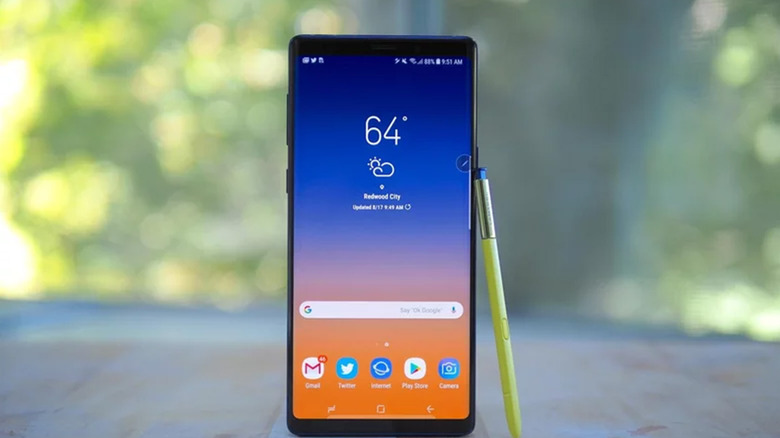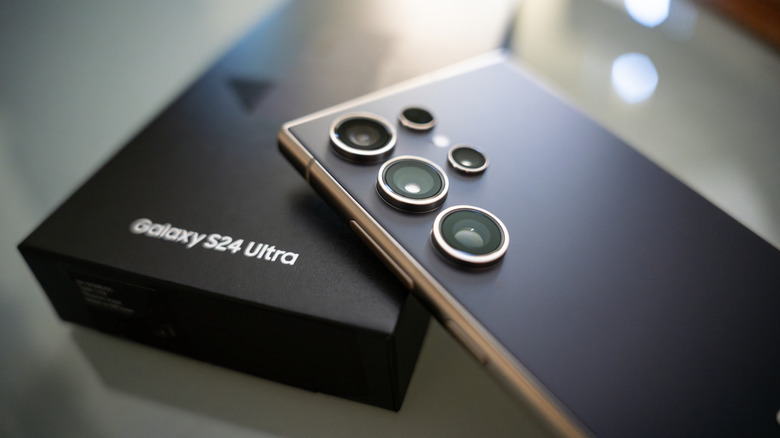The 9 Best And 6 Worst Samsung Phones Of All Time
Samsung may not have ever built up the same cultural cache that Apple has, but that hasn't stopped the company from become something of a titan — especially in the world of Android devices.
As a leader in smartphone innovation, Samsung has delivered some highly memorable devices over the years. It has given us some highly forgettable ones, too, and the company has also had its share of occasionally embarrassing moments. From impressive flip phones and folding devices to worldwide recalls, it has been a rollercoaster ride for the Korean company.
With AI innovations and game-changing cameras, the latest releases by both Apple and Samsung make the future look like a two-horse race. Still, it took a past littered with hits and misses for Samsung to get where it presently is, and that's what we will take a look at today. In no particular order, here are five of the best and five of the worst Samsung phones we have been treated to over the years.
Best: Samsung Galaxy S II
The Samsung Galaxy S II was the blockbuster sequel to the Galaxy S and was, quite simply, a runaway success. Launched in 2011, it helped position Samsung as a major player in the Android market and was among the first of its kind to seriously threaten iPhone dominance. While it was far from perfect — especially when compared to some beasts of today — the Galaxy S II packed in a lot of the best available hardware of the time. It featured a 1.2GHz dual-core Exynos processor and a stunning Super AMOLED Plus display that served as its standout feature. It also pushed performance levels of the time with its 1 GB of RAM.
Additionally, owners got cutting-edge full HD video and an 8MP main camera that produced sharper and more vibrant images than what was generally on offer back then. Furthermore, the battery delivered more than 18 hours of continuous use on a 2G network. Yet somehow, Samsung managed to keep the phone relatively slim and lightweight. Other features that became more commonplace after appearing on the S II included mobile hotspot tethering, near-field communication, and a selfie camera for taking "vanity shots," as we described them in our 2012 Samsung Galaxy S II review.
All in all, the Samsung Galaxy S II was significant in the tech giant's journey to prominence and is considered by many today to be the best Samsung phone of all time.
Best: Samsung Galaxy S III
The Samsung Galaxy S III didn't break a ton of new ground when it comes to hardware innovations. Don't get us wrong, it had the best specs available for its release year and was among the most powerful smartphones of its era. However, you won't hear a lot of people talk about some wild thing Samsung did with these. Instead, the stories you'll hear will be about what a rock-solid phone this thing was and how well it worked overall.
There were some things that came together for Samsung, though. The Galaxy S III was the first generation where the lineup was all brought together under one name. Prior generations had specialized names and even designs depending on where you bought them. For instance, the Samsung Epic 4G Touch didn't look the same as the Galaxy S II sold on T-Mobile. The Galaxy S III homogenized Samsung's offerings under one branding.
The result was one of the most popular smartphones of all time. It sold 30 million units just a few months after its release and approximately 70 million units overall, being the first Android phone to dethrone the iPhone as the bestselling phone of its release year, beating out the iPhone 4s and its 60 million units. Samsung would ride that momentum into the Galaxy S4 launch, which would sell just as well as the S III.
In short, the Galaxy S III was the beginning of Samsung's dominance in the Android space — a title the Korean phone maker hasn't given up yet.
Worst: Samsung Galaxy Note 7
The Galaxy Note 7 actually a terrible phone, it's just that it had a tendency to spontaneously combust. If you could sleep well knowing that, you'd have had yourself a pretty decent phone. However, you couldn't take it very far as it was banned from going on flights, and there was eventually a worldwide recall.
However, pros and cons lists around the web noted its superb display, quality build, excellent camera, and long battery life against its premium price, mono audio, and the fact that it might explode in your pocket at any given moment. We gave the Galaxy Note 7 a positive review back in 2016, but that was before reports of the defective battery arrived — the fact is that this phone should never have seen the light of day.
To this day, the Note 7 battery fiasco remains the most noteworthy blight in smartphone history and seriously damaged Samsung's reputation around the world. Thankfully, the company learned from its mistakes and has delivered a number of high-quality smartphones since that haven't threatened the lives of anybody whatsoever.
Best: Samsung Galaxy S25 Ultra
It would be remiss not to include the latest and greatest non-foldable phone in Samsung's lineup — the Samsung Galaxy S25 Ultra. The phone has only been out for about a month as of this writing so its long-term contribution to smartphone history is still largely up for debate. Still, it has the best specs of any Samsung phone on the market, or at least it will until Samsung releases their new foldables later in 2025. Even after that, the Ultra will be much cheaper than those boutique foldables and their still-massive price tags.
So, why does this phone deserve to be here? Well for starters, it fixed the issues with the Galaxy S24 Ultra screen, which we'll get to later. Other than that, it adopted a thinner, lighter design while still having an excellent battery, top-of-the-line specs, and outstanding cameras. It lost some things its predecessors had, like Bluetooth capabilities on the S-Pen, but the pros still wildly outweigh the cons. The design has also been a little polarizing. For example, the camera rings are just decorations and it also looks a little bit like an iPhone.
In any case, if you want the best candy bar phone on Samsung's shelf today, the Galaxy S25 Ultra is it. It's fast, the screen is gorgeous, and everything just works right. Samsung has also injected a bunch of AI into the phone. How much people will like the AI is subject to debate but it's there if anyone wants to try it.
Worst: Samsung Galaxy S4
Design-wise, the Galaxy S4 was essentially the Galaxy S3 with a fresh lick of paint. However, this didn't stop people from buying it, and the phone was still something of a bestseller. Yet, its plastic build, average camera quality, and disappointing battery life led to some poor reviews and pressure on Samsung to be more innovative.
However, it was the TouchWiz skin and its many unnecessary features that ruffled most feathers. With gimmicks like head-tilt scrolling never gaining traction and other "innovative" features like Group Play, with its ability to sync the phone into a surround sound system with other phones, the S4 was criticized for its abundant bloatware. Many users felt it led to performance issues and a cluttered all-around experience.
In our 2013 review of the Galaxy S4, we mentioned that Samsung didn't put enough expertise into the camera. We noted that raising its pixel count didn't quite allow the phone to compete with its closest competitors, and images in low light often returned noisy, poor quality results. The absence of an optical image stabilizer would have been partly responsible for this, but we also noted that the camera often had a difficult time focussing on close-up subjects.
With hindsight, the S4 should have broken new ground instead of retreading much of the same. Perhaps Samsung needed to prioritize genuine innovation instead of flashy gimmicks. Nevertheless, the unit's strong sales surely spurred the company into allocating more resources to future breakthroughs.
Best: Samsung Galaxy Nexus
The Super AMOLED technology on the Samsung Galaxy Nexus contributed to the phone delivering one of the richest and best-detailed displays at that time. It was one of the first to sport a 720p HD screen, and it was also a large one at 4.65 inches. The phone felt robust and featured a metal inner frame that made it that bit more durable than its competitors, and it was also impressively lightweight and thin.
However, as we noted in our 2012 review of the Samsung Galaxy Nexus, it was the company's close collaboration with Google that propelled the Samsung Galaxy Nexus to the upper echelons of smartphone history. This eliminated Samsung phones' most prominent problem of the time — the TouchWiz user interface — allowing the Galaxy Nexus to run on stock Android without pesky Samsung modifications. Users got a much more satisfying experience with quicker updates and an altogether more user-friendly interface.
They also enjoyed the many other perks that the Android Ice Cream Sandwich OS had to offer, including enhanced multitasking, resizable widgets, photo improvements, and face unlock. It was also one of the first phones to come fitted with the NFC chip, which has become increasingly commonplace in smartphones.
However, sales were on the modest side. Yet the Galaxy Nexus played a significant role in Android evolution and remains a notable entry in the history of smartphone releases.
Worst: Samsung Galaxy S6
With the Galaxy S6, Samsung prioritized aesthetics and build over everything else. So while it did have a luxurious metal and glass design, the company also championed a rather steep and unjustified price hike. However, Samsung was eventually pressured to slash prices on both the Galaxy S6 and the Galaxy S6 Edge after disappointing sales.
Still, it was the phone's exclusions rather than the price that garnered the most criticism in our review of the Galaxy S6 from 2015. One of the more controversial omissions was the Micro SD card slot, which meant Samsung supporters could no longer expand their phone's storage. Furthermore, the battery was sealed in. This was particularly disappointing because the S6 also had a reduced battery life compared to the S5, and users could no longer swap out for a spare. The lack of an IP rating also dismayed many loyal Samsung fans as Apple continued to dominate the market.
It wasn't all doom and gloom, however. The S6 featured a top-tier 16MP camera with optical image stabilization. In addition, performance was snappy, and users could enjoy fast wireless charging. It also featured a vibrant and sharp HD AMOLED display that drew particular praise. Despite those features, many felt the Galaxy S6 was a significant step down from the water-resistant, Micro SD card equipped Galaxy S5 with its removable battery.
Best: Samsung Galaxy Z Flip 5
Returning to more recent times, the Samsung Galaxy Z Flip 5 succeeded the Z Flip 4 in the late summer of '23 and managed to improve on what was a particularly popular Samsung flip phone. With a speedy Snapdragon 8 Gen 2 chipset and 8GB of RAM, the Z Flip 5 improved on performance.
Additionally, the stunning Foldable Dynamic AMOLED 2X display maintained its large dimensions and 120Hz refresh rate but increased the peak brightness to an impressive 1,750 nits. This meant that the stunning display still featured smooth scrolling, and you could easily see it in bright conditions, including under intense sunlight. You also got the same useful outer screen that was so loved on the Flip 4.
So, the Flip 5 looked better than ever, which was impressive enough in itself. However, We noted in our review of the Galaxy Z Flip 5 that Samsung also managed to fix the overall design problem of the Flip 4 by eliminating the gap that was evident when you folded the phone shut. With the design now perfect, the phone was even thinner and could slip into the tightest of pockets with ease.
Complemented by its excellent selfie camera, it proved to be a big hit among the fashion-conscious. The omission of a telephoto option may have dissuaded the more serious smartphone photographer, but this phone was all about looking dapper, and it succeeded in doing just that.
Worst: Samsung Wave S8500
Samsung's proprietary bada OS was the primary reason for this absolute failure back in 2010. While the Wave S8500 did receive praise from some quarters for its hardware, it was the software that let it down and was universally panned. We tried our best to give the Samsung Wave S8500 an honest and balanced review, admiring the thin, robust build, the sharp, bright Super AMOLED display, and other features that made the phone so promising. However, it was impossible not to take not of the fact that the device was hampered by its poor operating system.
While Samsung aimed to provide a compelling user experience for smartphone users, there were several complaints. Chief among them was a lack of available apps. Samsung Apps, which was where you had to source them for the Wave S8500, had fewer than 1,000 available at that time, compared to the 200,000 available on the Apple App Store. As a result, there really didn't seem much point in investing in the Samsung Wave S8500. Even the Google Play Store had 70,000 titles at the time — but these were only compatible with other Samsung phones.
However, the whole bada affair wasn't a complete waste of time. It was a valuable addition to Samsung's experience in technology development and went a long way to priming future innovations.
Best: Samsung Galaxy S5
There will likely never be another phone like the Samsung Galaxy S5, even if it doesn't seem like much now. It would be another few years before Samsung removed the front buttons, which meant that this was essentially a sleeker, better-looking Galaxy S4. It was again atop the spec range in its release year and was considered the best known Android smartphone in 2014, even if it lacked the premium feel of the HTC One M8 and the iPhone 5s that launched that year.
However, little did consumers know that they would be saying goodbye to a truly unicorn phone experience. You see, the Galaxy S5 had this neat trick where it had a removable battery while also maintaining an IP67 rating and wireless charging thanks to a special case. That means that despite having a battery door, the phone could last up to 30 minutes under one meter of water while also being completely protected from dust and it could be charged wirelessly. The good old days, right?
Phone makers eventually did away with the removable battery — including Samsung — citing all sorts of things from thinner designs to easier waterproofing. Consumers continued to correctly point out that the Galaxy S5 had all of these features while still being thinner than its immediate rival, the HTC One M8. The good news for replaceable battery fans is that they may make a comeback. The EU has passed legislation that may force OEMs have to start including removable batteries again by 2027.
Worst: Samsung Galaxy Fold
While the Galaxy Fold series has gone on to some profound innovations in the folding phone field, the original model didn't exactly lay a great foundation for success.
Compared with the outstanding feats of engineering evident in the latest Fold and Flip models, the original Samsung Galaxy Fold didn't have the robust design needed to bode well for the future. It was very flimsy, to begin with, and there was even a release delay as many of the units that were sent out to publications to review were breaking. The situation improved somewhat upon launch, but many reviewers and consumers of the time were still not convinced by the phone's durability.
While it did look very cool, worked like a foldable tablet, had a powerful battery, and took phone gaming to a new level, it was outrageously expensive. In fact, it was around double the price of other flagship phones at that time. Considering the fragile plastic screen, it has to go down as one of Samsung's biggest disappointments. Thankfully, durability and design improved in the subsequent iterations, and recent iterations such as the Galaxy Z Fold 5 are now more akin to the vision Samsung must have initially had.
Best: Samsung Galaxy Note
The Samsung Galaxy Note was a momentous release in the company's history that unleashed the stylus equipped phablet to the world. It paved the way for larger displays to become commonplace and introduced the game-changing S-Pen. This large screen and accurate, pressure-sensitive stylus combination ensured the Galaxy Note was the first smartphone designed for serious productivity.
At that time, phone manufacturers were obsessed with making their devices as compact as possible. That was, after all, the idea behind a mobile phone, but the Galaxy Note changed all that. While the original Note had a somewhat smaller display than some of the behemoths we see today, at that time 5.3 inches was enormous.
Thus, the phablet was born. It set the stage for an abundance of smartphones with large displays, which shows no signs of slowing down today. However, the Samsung Galaxy Note was still portable despite its large display. Its extra-thin build meant it could still be slipped into a front pocket with ease.
Sales were relatively modest, but the target market was still niche. The reception the original Note received was somewhat polarizing, but boy, did it and many of its successors go on to prove everyone wrong.
Best: Samsung Galaxy S20 FE
You might have noticed that there aren't very many budget-oriented smartphones on this list. This is because Samsung's budget smartphones were nothing to write home about. They were fine — not amazing but also not terrible. Then, Samsung released the FE series with the Galaxy S20 FE.
This changed everything for Samsung and its budget lineup. It was essentially a scaled back Galaxy S20 that cost less money and was therefore more accessible. It immediately became one of the best midrange phones money could buy and it became a fan favorite for Samsung enthusiasts.
To reduce costs, there was a less powerful chipset in the device, and it was made of plastic instead of metal or glass. The cameras were also less capable than the more expensive S20, as you would expect for a budget device. Samsung was smart, though, and kept some modern features — like a 120Hz display — while having solid battery. Despite the less powerful CPU, it was still plenty quick for its era. It also received security updates for four years, which was a long time back in 2020.
The phone sparked something in the Samsung faithful and the S20 FE became exceptionally popular. In fact, people were still asking whether or not to buy one in 2024. Samsung has yet to recapture that magic even though the Galaxy S21 FE and the Galaxy S23 FE are still well-regarded devices.
Worst: Samsung Galaxy S24 Ultra
Once upon a time, the Galaxy S24 Ultra had a prime spot on our best phones list and rightfully so. It has a cohesive package that saw the removal of the curved display from prior Samsung models while instituting some new tech and a bunch of AI features. The cameras were good, the battery life was good, and the performance was good. By all accounts, it's a solid phone and if you can get one on the cheap with the release of the S25 Ultra, it's worth consideration.
So, why is it here? It's mostly because of the screen. There was something about the screen that people absolutely hated. The first was the color. Samsung toned down its hallmark saturation on the S24 Ultra. As a result, the screen was technically more accurate, but it angered people who liked the punched-up colors so much that Samsung eventually added a vividness tool to help punch up the colors. Add to that the small but significant risk of getting a phone with the dreaded grainy screen effect and, well, it wasn't Samsung's best year for displays.
As someone who had the grainy screen on my Galaxy S24 Ultra, I can tell you that once you noticed it, you can't go back. It looked truly bad. Samsung would go on to use the same screen in the Galaxy S25 Ultra but mercifully fixed the grainy screen while also punching up the colors a little bit more.
Best: Samsung Galaxy Note 9
The Samsung Galaxy Note 9 turned a lot of heads when it came out. It was one of the first phones to breach the $1,000 price point, which upset many fans. Whether or not to even buy the thing was the primary subject of discussion when Samsung's flagship came out in 2018. The phone was known for its high-end specs, increasingly functional S-Pen, and reliable cameras and screen. In the grand scheme of things, the Galaxy Note 9 is but a footnote in Samsung's long reign of dominance and you got a cool – and now exceptionally rare — "Fortnite" skin if you bought one.
With that said, this phone was the end of an era. It was Samsung's Note or Ultra device to house the S-Pen and a headphone jack while still having all the goods of other smartphones. In fact, many pundits claimed that the OnePlus 6 from 2018 was the better overall purchase. However, the fact that the Note had a headphone jack, an S-Pen, wireless charging, and the same sized battery while the OnePlus 6 lacked two of those features was a testament to how stacked the Note 9 really was.
As a result, the Galaxy Note 9 was truly one of the greatest and most functional phones ever designed. Samsung would remove the headphone jack on the Galaxy Note 10, making this the last flagship Samsung phone to include one. We will say, though, that the iridescent mirrored finish on the back of the Note 10+ was truly gorgeous.
How we arrived at our choices
It took a lot of work to whittle down the list of outstanding Samsung phones to just five, and finding five that could be considered bad phones — with one or two exceptions — was even more of a challenge.
However, after considering our expert SlashGear reviews, we also looked at historical consumer reviews alongside total units sold. Finally, we looked at major incidents and important innovations that Samsung phones have given us over the years, all while taking into account how those shaped important industry trends — for better or for worse. This led us to our final set of the five best and the five worst Samsung phones of all time.
